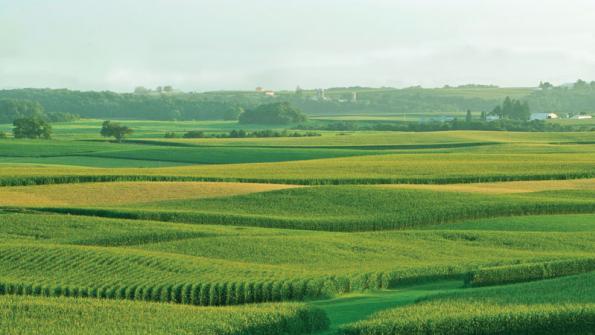
It should be a good Christmas for corn and soybean farmers in the Midwest. Recent figures from Illinois indicate that the average income on grain farms will likely be more than $200,000 for 2011. High corn and soybean prices have pushed incomes to these levels.
University of Illinois economist Gary Schnitkey presented the latest Illinois farm income figures at the recent Illinois Farm Economics Summit. The figures were obtained from grain farms enrolled in Illinois Farm Business Farm Management (FBFM).
From 2001 to 2006, grain farm incomes in Illinois averaged just $66,000 a year, Schnitkey said. Then a “golden age” began when incomes rose to an average $177,000 per farm for 2006 through 2010. The 2011 average crop income will likely average more than $200,000.
“While average incomes will be over $200,000, incomes will vary across farms because of yield differences across farms,” Schnitkey explained. “Many farms have had yields significantly below average, particularly in the central and western Illinois. As a result, many farms in central and western Illinois will have lower incomes while farms in northern Illinois will have higher incomes.”
The high corn and soybean prices drove farm incomes to these levels. Schnitkey says corn prices for the market year averaged between $6.20 and $7.20/bu. and between $11.60 and $13.60/bu. for soybeans.
The outlook for 2012 grain prices is not as robust, with corn projected at $5/bu. and soybeans at $11/bu., Schnitkey said. If these prices occur and Illinois farms produce normal yields, then the 2012 average farm income would be $150,000, he added. This, of course, would be another good income year for farmers.
If prices dropped further, though, Schnitkey said incomes will move back to prior “golden age” incomes. For example, $4.50/bu. corn and $10.50/bu. soybeans will mean average incomes of $86,000.
“All grain farms need to consider ways of withstanding periods where crop prices are significantly below the long-run averages of $4.50 for corn and $10.50 for soybeans,” Schnitkey said. “Understanding how to respond to a $3.50 corn price and $8.50 soybean price will be a worthwhile planning activity.
“Farms particularly vulnerable to price downturns are farms that have a percent of their farm base cash rented,” he added. “Building financial reserves is a particularly good way of being able to withstand periods of low incomes. Farms also need to find ways of lowering cash rents when periods of low prices are on the horizon.”
Go to the full presentation at: www.farmdocdaily.illinois.edu/2011/12/2011_ifes_4.html.
About the Author(s)
You May Also Like






